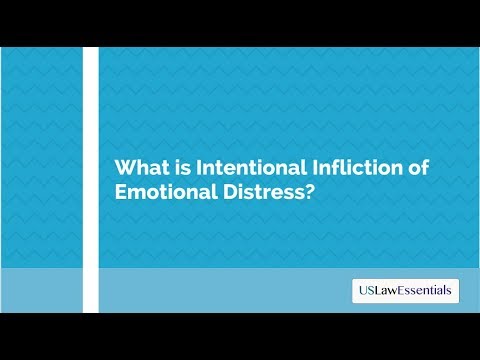
Welcome to this informative article on understanding emotional distress claims in Texas. We’re here to provide you with a comprehensive overview of this topic. However, it’s essential to note that while we strive to offer accurate and reliable information, you should always cross-reference with other sources or consult with legal advisors for specific legal advice. With that in mind, let’s delve into the world of emotional distress claims in Texas and explore the key concepts involved.
Understanding Emotional Distress in Texas: Key Elements and Considerations
Understanding Emotional Distress Claims in Texas: A Comprehensive Overview
Emotional distress is a common term used to describe the psychological impact caused by traumatic events or experiences. In the context of personal injury law, emotional distress refers to the harm suffered by an individual as a result of someone else’s negligence or intentional misconduct. Emotional distress claims are a type of civil lawsuit that seek compensation for the psychological harm caused by the defendant’s actions.
📋 Content in this article
In Texas, emotional distress claims are recognized and can be pursued under certain circumstances. To successfully assert an emotional distress claim, several key elements and considerations must be taken into account. Understanding these elements is crucial for individuals who are considering pursuing a claim for emotional distress in Texas.
Key Elements of an Emotional Distress Claim
Understanding the Evidence Required for Emotional Distress Claims in US Law
Understanding Emotional Distress Claims in Texas: A Comprehensive Overview
If you have experienced emotional distress due to someone else’s actions, you may be entitled to compensation under the law. Emotional distress claims are a specific type of legal claim that allows individuals to seek damages for the psychological harm they have suffered. In Texas, these claims are taken seriously, and it is important to understand the evidence required to support such claims in order to seek the compensation you deserve.
To successfully pursue an emotional distress claim in Texas, there are certain key elements that must be established. These elements are:
1. Intentional or Reckless Conduct: The defendant’s actions must have been intentional or reckless. This means that they either intended to cause emotional distress or that their conduct was so extreme and outrageous that they should have known it would cause severe emotional distress.
2. Severe Emotional Distress: The emotional distress suffered by the plaintiff must be severe. This means that the distress goes beyond the normal range of emotions experienced in everyday life. It must be more than just temporary sadness or disappointment.
3. Causation: There must be a direct link between the defendant’s conduct and the plaintiff’s emotional distress. It must be proven that the defendant’s actions were the cause of the distress and that, without their actions, the distress would not have occurred.
4. Physical Manifestation: In some cases, Texas law requires a physical manifestation of the emotional distress. This means that there must be evidence of physical symptoms resulting from the psychological harm suffered. Examples of physical manifestations may include headaches, ulcers, or other physical ailments directly related to the emotional distress.
To support your emotional distress claim, gathering and presenting evidence is crucial. Here are some types of evidence that may be helpful in proving your case:
Title: Understanding Emotional Distress Claims in Texas: A Comprehensive Overview
Introduction:
In the field of US law, understanding emotional distress claims is of utmost importance. Emotional distress refers to the psychological impact that an individual may experience due to the intentional or negligent actions of another party. This comprehensive overview aims to shed light on the key aspects of emotional distress claims in Texas. However, readers are strongly advised to verify and cross-reference the content of this article, as laws and regulations may change over time.
1. The Nature of Emotional Distress Claims:
Emotional distress claims are a subset of personal injury law and fall under the category of non-physical injuries. These claims arise when an individual suffers severe emotional harm as a direct result of someone else’s misconduct.
2. Types of Emotional Distress Claims:
There are two main types of emotional distress claims recognized in Texas: negligent infliction of emotional distress (NIED) and intentional infliction of emotional distress (IIED).
a. Negligent Infliction of Emotional Distress (NIED):
NIED claims arise when a person’s emotional distress is caused by another party’s negligence. To successfully prove an NIED claim, the following elements must be established:
– Duty: The defendant owed a duty of care to the plaintiff.
– Breach: The defendant breached that duty through negligent conduct.
– Cause: The breach directly caused the plaintiff’s emotional distress.
– Severity: The emotional distress suffered by the plaintiff is severe or significant.
b. Intentional Infliction of Emotional Distress (IIED):
IIED claims arise when a person intentionally causes severe emotional distress to another through outrageous conduct. To establish an IIED claim, the following elements must be proven:
– Intent: The defendant intentionally engaged in conduct that they knew would cause emotional distress.
– Outrageousness: The defendant’s conduct was extreme and beyond the bounds of acceptable behavior.
